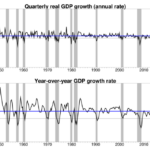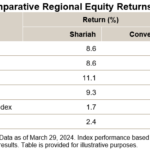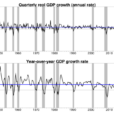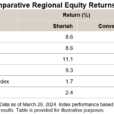
Mainstream neoclassical economics is hooked on the idea of individual worker-savers as prime movers in capitalist market economies. As workers, individuals choose how much to work, determining the economy’s output; as savers, they determine how much of that output takes the shape of the economy’s capital investment. With banks as conduits channeling saving flows into investment, firms churn inputs into outputs that match worker-savers’ tastes. In this way, the neoclassical world gets shaped by what rational intertemporal utility-maximizing worker-savers wish it to be.
In its most fanciful version – erected on supposedly sound micro foundations and known as “real business cycle theory” (RBC) – the neoclassical fantasy world of intertemporally optimizing worker-savers is subject to exogenous shocks to tastes and technology. Random technology shocks may be either positive or negative, and as Edward Prescott—acclaimed RBC founding father, together with Fynn Kydland—famously explained, negative technology shocks arise whenever there is a traffic jam on some bridge (see Romer 2016). That’s truly creative: Imagine a couple of dancers receiving the Nobel prize in medicine for wildly hopping around a coconut tree while peeing on a rotten banana and screaming voodoo until they are blue in the face. Unlikely to happen in medicine, you might say, but in economics voodoo routines and hallucinations of this kind can still earn you a pseudo-Nobel prize properly known as “The Sveriges Riksbank Prize in Economic Sciences in Memory of Alfred Nobel.”
There also exists a “New Keynesian” variety of mainstream neoclassical economics that accepts the RBC framework as its core but adds some “frictions” to the modeled worker-saver paradise that hinder continuous and smooth full-employment equilibrium. Both camps share a common modeling technique (or speak the same language) known as “Dynamic Stochastic General Equilibrium” (DSGE) methodology. The only thing “Keynesian” about the New Keynesian variety is that it provides a rationale for government stabilization policies.
Hardcore (“New Classical”) RBC proponents interpret the Great Depression as a worker-saver mass movement into the world of leisure. By contrast, New Keynesians offer an apology for why market economies might take their time in returning to full employment. Regaining full employment may then be accelerated by government intervention, preferably to be enacted by an independent central bank – with central bank independence being re-interpreted as “rules rather than discretion” in another extraordinarily muddled piece of obscurantism by said RBC-duo Kydland and Prescott (1977) (see Bibow 2001).
Needless to say, and obvious to any serious economist, the worker-saver fantasy world depicted in DSGE models has little in common with capitalism as we know it on this planet. In fact, modern mainstream macroeconomics has completely unlearned the “Keynesian revolution” and essentially turned macroeconomics into an especially shoddy version of microeconomics.
Keynes identified two key flaws in the mainstream neoclassical economics of his time. The first was a fallacy of composition regarding the working of the labor market: while the individual worker may price themselves into employment by accepting a lower wage, workers in the aggregate can only price the macroeconomy into debt deflation by going down that route. Keynes observed that the only reliable expansionary effect of a falling wage level arises through competitiveness gains and net exports. Writing at a time when the world was engaging in “beggar-thy-neighbor” competitive devaluations, that seemed hardly a promising strategy to rely on.
















